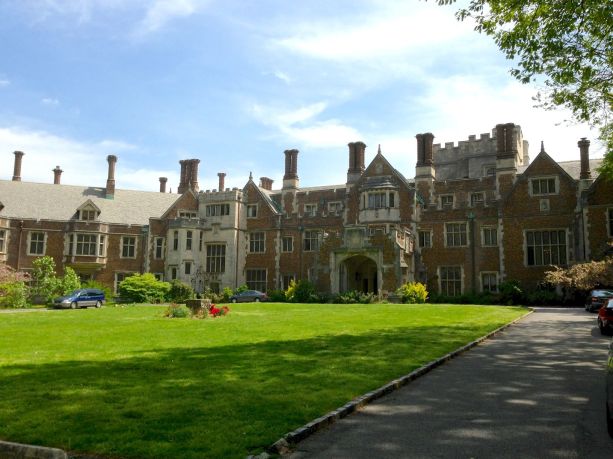Residents added a few items to the Village of North Hills Planning Board’s list of environmental concerns for a high-end subdivision at a public hearing Wednesday night.
But the Manhasset Bay Group, developer of the “Manhasset Crest” project on the former site of the Insifada Retreat House, already planned to study them in the coming weeks, attorney Anthony Guardino said.
“They’re all valid concerns, but all of them were previously identified as items to be studied,” he said.
The aim of the hearing, called a “scoping session,” was to generate additional questions from the public about the possible environmental impacts of Manhasset Bay Group’s proposal to build 46 custom homes on the 30.43-acre property off Searingtown Road, Village Attorney A. Thomas Levin said.
It was required under state environmental review law after the board ruled in January the project could impact ecological resources, appearance, water resources, traffic and security at the site bordering the two Estates at North Hills subdivisions.
In addition to the issues the board identified, Norman Nemecs of the Manhasset-Lakeville Fire Department’s Company 1 said the board should set requirements for the materials used to build the houses.
Wood construction in a house at North Hills’ Stone Hill condominium complex caused it to collapse in a 2014 fire, nearly killing a dozen firefighters, Nemecs said.
Manhasset Crest is further than Stone Hill from the nearest Manhasset-Lakeville fire house, he said, and the right building materials could buy firefighters 18 extra minutes before a house collapses.
“Those 18 minutes are precious,” Nemecs said. “Without those 18 minutes, we stand the chance of having another Stone Hill event, but this time with possibly worse consequences, given the geographical proximity of this site.”
Manhasset Bay Group is already evaluating what materials to use, Guardino said.
After the hearing, Levin said the village can’t require a developer to use specific materials and can’t have a stricter building code than the state’s without special permission.
Estates I resident Carl Russo asked whether the Planning Board had considered requiring the developer to have liability insurance for any damage to neighboring homes from drainage problems, a concern residents raised at a hearing last year.
Planning Board Chairman David Kass said the board would look into the insurance issue. Drainage is on the existing list of the board’s environmental concerns, he said.
Other residents raised worries about rodents infesting nearby houses during construction, traffic on Searingtown Road and possible flooding, all issues Kass said the board already identified.
These concerns are routine for subdivisions of this scale, Guardino said.
They were in Manhasset Bay Group’s draft scope, the outline for a full environmental study it submitted in January.
Estates II resident Greg Lenzo said he thinks the development will increase home values in the area, but the neighbors raised sensible concerns.
“I believe that they houses they’ll be building will be beautiful homes, but they wanna know how it’s going to affect other people in the area,” Lenzo said.
Planning Board consultants VHB Engineers will now develop a final scope for the study on which the board will vote in April, Levin said.
The study will likely take one to two months to complete, Guardino said, and much of it is already done.
Manhasset Bay Group has been trying to develop a subdivision on the site since 2014 and reduced the proposed number of homes from 51 to 46 this year, with plans saying the houses would sit on lots between a half-acre and one acre in size.
The company, incorporated in Delaware and led by four Hong Kong real estate magnates, purchased the property from the Jesuit Order of the Catholic Church for $36.5 million in July 2013.
It subsequently demolished the historic house, built in the early 20th century, over sustained protest from local civic and historic preservation groups.
Efforts to stop the demolition and make the house a historic landmark ultimately failed.

